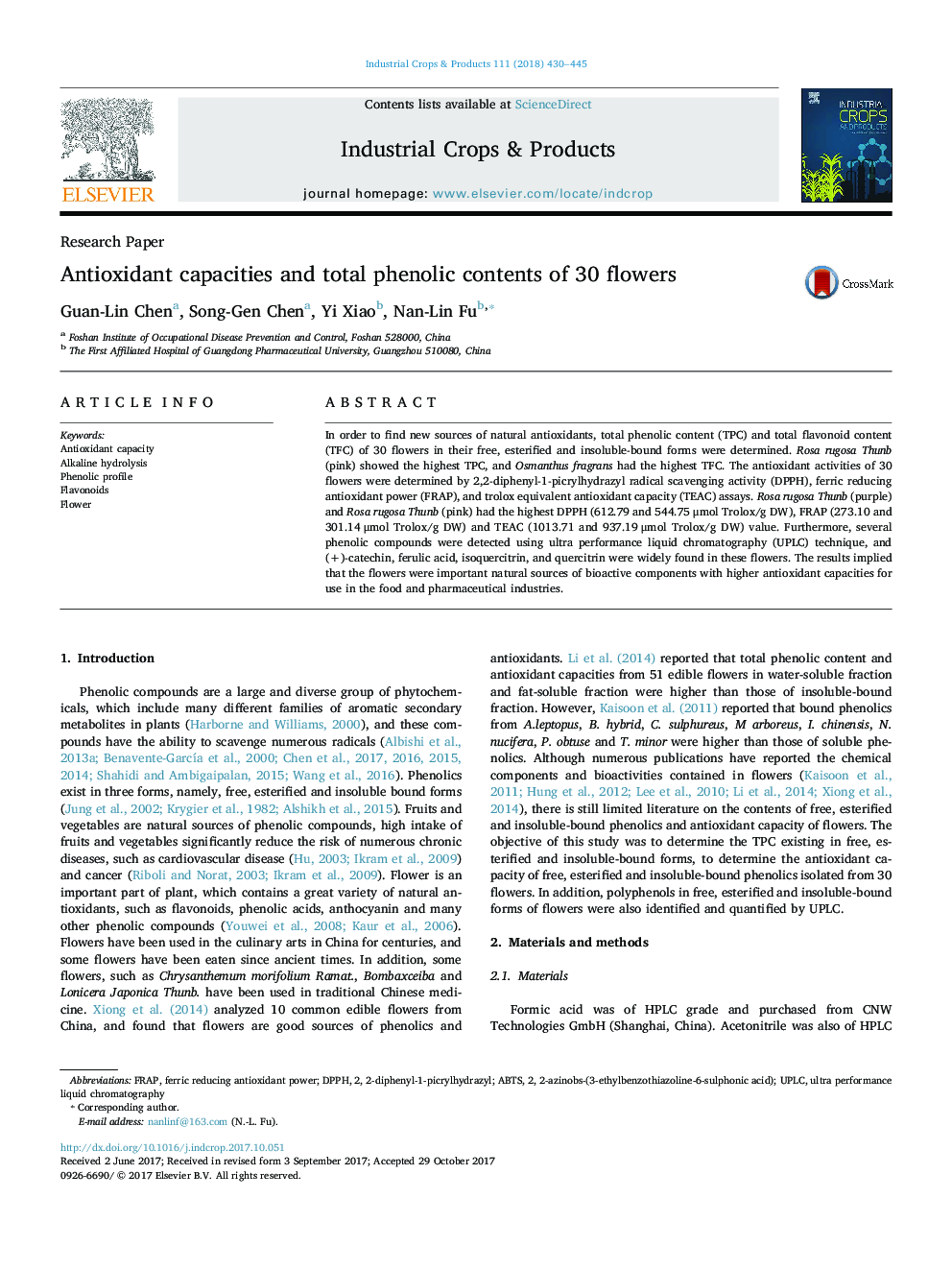| Article ID | Journal | Published Year | Pages | File Type |
|---|---|---|---|---|
| 8880841 | Industrial Crops and Products | 2018 | 16 Pages |
Abstract
In order to find new sources of natural antioxidants, total phenolic content (TPC) and total flavonoid content (TFC) of 30 flowers in their free, esterified and insoluble-bound forms were determined. Rosa rugosa Thunb (pink) showed the highest TPC, and Osmanthus fragrans had the highest TFC. The antioxidant activities of 30 flowers were determined by 2,2-diphenyl-1-picrylhydrazyl radical scavenging activity (DPPH), ferric reducing antioxidant power (FRAP), and trolox equivalent antioxidant capacity (TEAC) assays. Rosa rugosa Thunb (purple) and Rosa rugosa Thunb (pink) had the highest DPPH (612.79 and 544.75 μmol Trolox/g DW), FRAP (273.10 and 301.14 μmol Trolox/g DW) and TEAC (1013.71 and 937.19 μmol Trolox/g DW) value. Furthermore, several phenolic compounds were detected using ultra performance liquid chromatography (UPLC) technique, and (+)-catechin, ferulic acid, isoquercitrin, and quercitrin were widely found in these flowers. The results implied that the flowers were important natural sources of bioactive components with higher antioxidant capacities for use in the food and pharmaceutical industries.
Keywords
Related Topics
Life Sciences
Agricultural and Biological Sciences
Agronomy and Crop Science
Authors
Guan-Lin Chen, Song-Gen Chen, Yi Xiao, Nan-Lin Fu,
